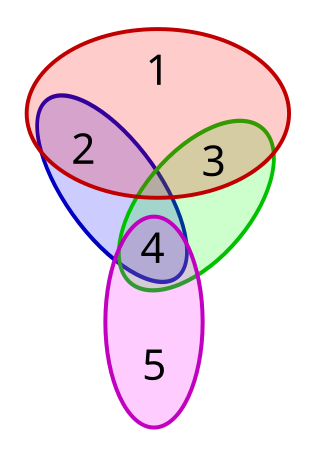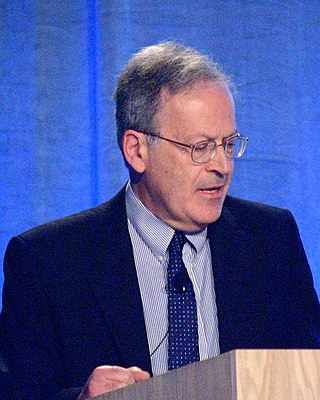Related Research Articles

In graph theory, a vertex cover of a graph is a set of vertices that includes at least one endpoint of every edge of the graph.
The Gödel Prize is an annual prize for outstanding papers in the area of theoretical computer science, given jointly by the European Association for Theoretical Computer Science (EATCS) and the Association for Computing Machinery Special Interest Group on Algorithms and Computational Theory. The award is named in honor of Kurt Gödel. Gödel's connection to theoretical computer science is that he was the first to mention the "P versus NP" question, in a 1956 letter to John von Neumann in which Gödel asked whether a certain NP-complete problem could be solved in quadratic or linear time.

The set cover problem is a classical question in combinatorics, computer science, operations research, and complexity theory.

Samson Abramsky is Professor of Computer Science at University College London. He was previously the Christopher Strachey Professor of Computing at Wolfson College, Oxford, from 2000 to 2021.
Algorithmic topology, or computational topology, is a subfield of topology with an overlap with areas of computer science, in particular, computational geometry and computational complexity theory.
The Fulkerson Prize for outstanding papers in the area of discrete mathematics is sponsored jointly by the Mathematical Optimization Society (MOS) and the American Mathematical Society (AMS). Up to three awards of $1,500 each are presented at each (triennial) International Symposium of the MOS. Originally, the prizes were paid out of a memorial fund administered by the AMS that was established by friends of the late Delbert Ray Fulkerson to encourage mathematical excellence in the fields of research exemplified by his work. The prizes are now funded by an endowment administered by MPS.
The Valiant–Vazirani theorem is a theorem in computational complexity theory stating that if there is a polynomial time algorithm for Unambiguous-SAT, then NP = RP. It was proven by Leslie Valiant and Vijay Vazirani in their paper titled NP is as easy as detecting unique solutions published in 1986.

Leslie Gabriel Valiant is a British American computer scientist and computational theorist. He was born to a chemical engineer father and a translator mother. He is currently the T. Jefferson Coolidge Professor of Computer Science and Applied Mathematics at Harvard University. Valiant was awarded the Turing Award in 2010, having been described by the A.C.M. as a heroic figure in theoretical computer science and a role model for his courage and creativity in addressing some of the deepest unsolved problems in science; in particular for his "striking combination of depth and breadth".

Vijay Virkumar Vazirani is an Indian American distinguished professor of computer science in the Donald Bren School of Information and Computer Sciences at the University of California, Irvine.
Maximum cardinality matching is a fundamental problem in graph theory. We are given a graph G, and the goal is to find a matching containing as many edges as possible; that is, a maximum cardinality subset of the edges such that each vertex is adjacent to at most one edge of the subset. As each edge will cover exactly two vertices, this problem is equivalent to the task of finding a matching that covers as many vertices as possible.

Ravindran Kannan is a Principal Researcher at Microsoft Research India, where he leads the algorithms research group. He is also the first adjunct faculty of Computer Science and Automation Department of Indian Institute of Science.
Umesh Virkumar Vazirani is an Indian–American academic who is the Roger A. Strauch Professor of Electrical Engineering and Computer Science at the University of California, Berkeley, and the director of the Berkeley Quantum Computation Center. His research interests lie primarily in quantum computing. He is also a co-author of a textbook on algorithms.

In computational complexity theory of computer science, the structural complexity theory or simply structural complexity is the study of complexity classes, rather than computational complexity of individual problems and algorithms. It involves the research of both internal structures of various complexity classes and the relations between different complexity classes.

Sanjeev Arora is an Indian American theoretical computer scientist who works in AI and Machine learning.
Piotr Indyk is Thomas D. and Virginia W. Cabot Professor in the Theory of Computation Group at the Computer Science and Artificial Intelligence Laboratory, Massachusetts Institute of Technology.
In theoretical computer science, the term isolation lemma refers to randomized algorithms that reduce the number of solutions to a problem to one, should a solution exist. This is achieved by constructing random constraints such that, with non-negligible probability, exactly one solution satisfies these additional constraints if the solution space is not empty. Isolation lemmas have important applications in computer science, such as the Valiant–Vazirani theorem and Toda's theorem in computational complexity theory.
In mathematical logic, computational complexity theory, and computer science, the existential theory of the reals is the set of all true sentences of the form
Geometric complexity theory (GCT), is a research program in computational complexity theory proposed by Ketan Mulmuley and Milind Sohoni. The goal of the program is to answer the most famous open problem in computer science – whether P = NP – by showing that the complexity class P is not equal to the complexity class NP.

Naveen Garg is a Professor of Computer Science in Indian Institute of Technology Delhi, specializing in algorithms and complexity in theoretical computer science. He was awarded the Shanti Swarup Bhatnagar Prize for Science and Technology, India's highest prize for excellence in science, mathematics and technology, in the mathematical sciences category in the year 2016. Naveen Garg's contributions are primarily in the design and analysis of approximation algorithms for NP-hard combinatorial optimization problems arising in network design, scheduling, routing, facility location etc.
Deepak Kapur is a Distinguished Professor in the Department of Computer Science at the University of New Mexico.
References
- 1 2 3 Page at IIT Bombay (visiting professor)
- ↑ Lance Fortnow, "Status of the P vs NP Problem", CACM, September 2009
- ↑ Mulmuley, K.; U. V Vazirani; V. V Vazirani (1987), "Matching is as easy as matrix inversion", Combinatorica, 7 (1): 105–113, CiteSeerX 10.1.1.70.2247 , doi:10.1007/BF02579206, S2CID 47370049. STOC version: doi : 10.1145/28395.383347
- ↑ The Isolation Lemma and Beyond, by Richard J. Lipton
- ↑ Foundation Day - Distinguished Alumni, Young Alumni Achievers and Research Awards presented
- ↑ ACM Award citation
- ↑ Miller Institute for Basic Research in Science Celebrating 50 years
- ↑ David and Lucile Packard Foundation About Ketan D. Mulmuley's Work
- ↑ Theory Group Department of Computer Science Faculty List